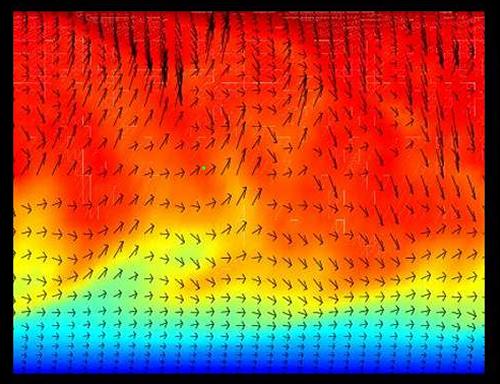 |
Thermal Instabilities and Transport Barriers |
| PhD student: |
R. Moestam lada@chalmers.se |
| Supervisor: |
Jan Weiland* weiland@elf.chalmers.se |
| Supervisor: |
Lars Davidson lada@chalmers.se |
| Cooperation: | Dept. of Electromagnetics* |
| Sponsors: | NFR |
| Publications: | [1] |
| Start of project: | February 1999 |
BACKGROUND Several phenomena in turbulence and transport seem to be of a universal nature in that they occur in widely different systems such as plasmas, gases or fluids. This of cource also means that the applications are widely different. They may be in fusion reactors, melted metals, turbines, heat exchangers and blood vessels. Examples of universal phenomena are thermal instabilities, Rossby or drift waves, shear flows and transport barriers. The problem of turbulent transport has been studied for a long time in both fluids and plasmas. The problem is in its more general forms extremely difficult and the progress in understanding and modelling turbulence has been rather slow although a very strong competence has developed both in fluid and plasma turbulence. The progress has, however, recently become more rapid due to the development of fast computers and new simulation techniques. At the department of Electromagnetics (formerly Electromagnetic Field Theory) problems on energy transport in magnetically confined plasmas have been studied for many years. The main instabilities of interest here are thermal instabilities. At the department of Thermo and Fluid Dynamics problems of heat transfer for industrial applications is one of the main areas of interest. Also here a main source of convection is thermal instability. Due to the present rapid progress both in plasma and fluid transport it is particularly important that close contact between the fields is kept so that new results can be transferred between them. RESEARCH PLAN - stabilizing temperature gradient in a horizontal channel. LES (Large Eddy Simulations) will be used to study the flow in a horizontal, plane channel (the flow between two infinite plates). A stabilizing temperature gradient will be introduced. The stronger the temperature gradient, or the higher the Rayleigh number, the more the turbulence will be damped: in the present research project this phenomenon is referred to as a transport barrier. The turbulent diffusion vanishes due to the stabilizing temperature gradient. At a later stage of the project the fluid could be replaced by a plasma. - a study of the transformation of free energy between shear flow and turbulence. A numerical code will be written to solve the vortex equation in some simple two dimensional cases. The vortex equation will initially be in a simple form with incompressible flow, applicable both to fluids and plasmas. Both the generation of turbulence by shear flows and the generation of shear flows by turbulence will be studied. The next step will be to include temperature gradients and temperature perturbations. Alternative models for fluids and plasmas will be used. This step will involve compressible flows. Mechanisms for the generation of shear flows by temperature gradients will be studied. This may lead to the transfer of turbulence into a shear flow which means that a transport barrier is formed. REFERENCES - click
|
|
This page, Thermal Instabilities and Transport Barriers, should be part of a frames system at www.tfd.chalmers.se/~lada/projects/proind.html by Webmaster: Ingalena Ljungström ilj@flowsim.se This site uses JavaScript. |